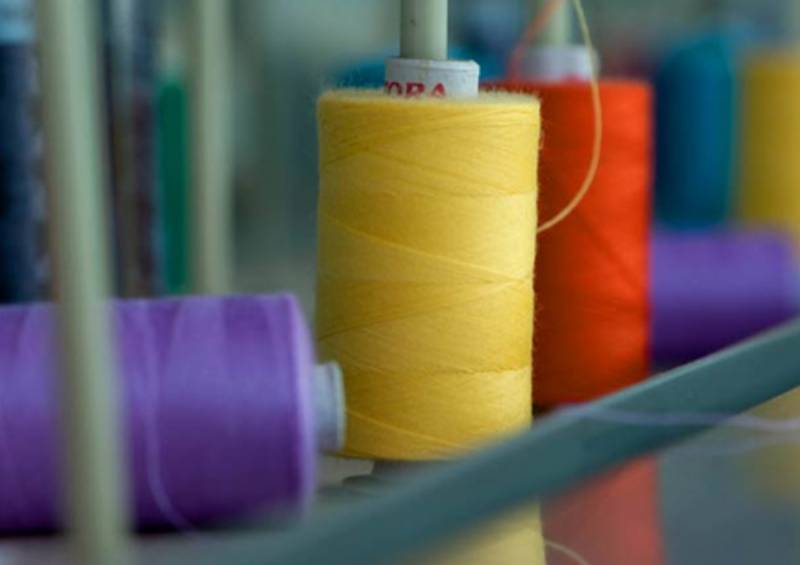FW
"As India aims for 20 per cent yearly growth in exports over the next decade, Indian manufacturers need to develop a business strategy that can help the country to succeed in the US and European markets. In 2025, global trade in the textile and apparel market will cross $1.2 trillion. China has nearly 40 per cent share in global exports. However, in the past few years, the country is experiencing a downward trend in apparel exports and has vacated nearly $30 billion worth of space in global trade. Growth in global trade and China’s shrinking exports share present a lucrative opportunity for other countries with competitive manufacturing facilities. India can become one of the biggest gainers in the changing landscape of global apparel trade. Drip Capital offers insights into some of the intriguing aspects that can make India a global textile destination."
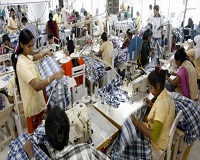 As India aims for 20 per cent yearly growth in exports over the next decade, Indian manufacturers need to develop a business strategy that can help the country to succeed in the US and European markets. In 2025, global trade in the textile and apparel market will cross $1.2 trillion. China has nearly 40 per cent share in global exports. However, in the past few years, the country is experiencing a downward trend in apparel exports and has vacated nearly $30 billion worth of space in global trade. Growth in global trade and China’s shrinking exports share present a lucrative opportunity for other countries with competitive manufacturing facilities. India can become one of the biggest gainers in the changing landscape of global apparel trade. Drip Capital offers insights into some of the intriguing aspects that can make India a global textile destination.
As India aims for 20 per cent yearly growth in exports over the next decade, Indian manufacturers need to develop a business strategy that can help the country to succeed in the US and European markets. In 2025, global trade in the textile and apparel market will cross $1.2 trillion. China has nearly 40 per cent share in global exports. However, in the past few years, the country is experiencing a downward trend in apparel exports and has vacated nearly $30 billion worth of space in global trade. Growth in global trade and China’s shrinking exports share present a lucrative opportunity for other countries with competitive manufacturing facilities. India can become one of the biggest gainers in the changing landscape of global apparel trade. Drip Capital offers insights into some of the intriguing aspects that can make India a global textile destination.
The prerequisites
Today, fair trade has become a prerequisite to sustain globally. Fair trade advocates expect that everyone in the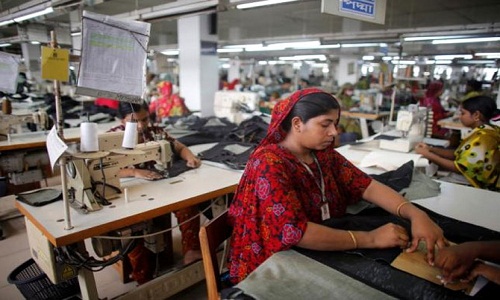 value should earn enough to fulfill basic household needs, regardless of volatile market prices. Environment sustainability is also a big concern and consumers in the West want products that are made judiciously. Indian manufacturers can stand out by positioning themselves as practitioners of Fairtrade. Environmental stewardship and labour-friendly working conditions can become India’s USP.
value should earn enough to fulfill basic household needs, regardless of volatile market prices. Environment sustainability is also a big concern and consumers in the West want products that are made judiciously. Indian manufacturers can stand out by positioning themselves as practitioners of Fairtrade. Environmental stewardship and labour-friendly working conditions can become India’s USP.
If India is to achieve close to 20 per cent yearly growth in apparel exports, manufacturers have to invest in skills training and process improvement to match global competitiveness. In recent times, there has been increased focus on skill development but these initiatives need to scale up. If the Indian garment industry remains at same productivity levels, they would need 35 million more workers to fulfill the new demand, which is nearly impossible. The objective should be to match the productivity levels of China in a few years, average output per hour and per machine output both in terms of quality and quantity. Indian policies make it difficult to import the fabric needed to produce winter or some specific garments. Locally, the textile industry is focused on cotton which leaves the exporters with no material to produce such products. This policy to protect the demand for local cotton producers is perhaps doing more than good.
"A new report by Changing Markets Foundation on sustainability has yet again brought fast fashion retailers under scanner as the biggest pollutants. The report concludes that many firms are still not doing enough to ensure sustainability of their textile supply chains. While there has been bold leadership from some retailers, a large part of the industry has still not demonstrated willingness to engage on the issue or set out policies on viscose production. These include: Burberry, Ikea, Missguided, Gucci, and Prada, as well as supermarkets such as Sainsbury's, Lidl, Morrisons and Asda."
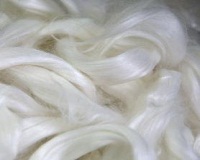 A new report by Changing Markets Foundation on sustainability has yet again brought fast fashion retailers under scanner as the biggest pollutants. The report concludes that many firms are still not doing enough to ensure sustainability of their textile supply chains. While there has been bold leadership from some retailers, a large part of the industry has still not demonstrated willingness to engage on the issue or set out policies on viscose production. These include: Burberry, Ikea, Missguided, Gucci, and Prada, as well as supermarkets such as Sainsbury's, Lidl, Morrisons and Asda.
A new report by Changing Markets Foundation on sustainability has yet again brought fast fashion retailers under scanner as the biggest pollutants. The report concludes that many firms are still not doing enough to ensure sustainability of their textile supply chains. While there has been bold leadership from some retailers, a large part of the industry has still not demonstrated willingness to engage on the issue or set out policies on viscose production. These include: Burberry, Ikea, Missguided, Gucci, and Prada, as well as supermarkets such as Sainsbury's, Lidl, Morrisons and Asda.
Viscose is a soft semi-synthetic fibre commonly used to make lighter clothing and is the third most-used fibre in the textiles industry after polyester and cotton. It is created from cellulose that is chemically extracted from trees, a process that requires hazardous chemicals. A number of major producers have been accused of failing to follow adequate health and safety processes, leading to pollution from production processes impacting surrounding water and soils.
Some well-known UK fashion retailers are sourcing viscose fabric from two factories in Indonesia and India,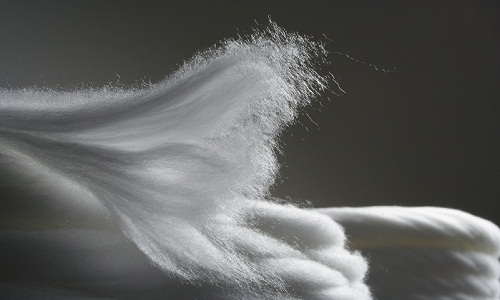 which have been accused of polluting their local environments and harming human health with toxic chemicals. As per Changing Markets Foundation, if managed properly, viscose has the potential to be a largely sustainable fibre as it is made from plant matter and is biodegradable.
which have been accused of polluting their local environments and harming human health with toxic chemicals. As per Changing Markets Foundation, if managed properly, viscose has the potential to be a largely sustainable fibre as it is made from plant matter and is biodegradable.
Path to sustainability
Changing Markets Foundation has set up a roadmap for sustainable viscose sourcing. Seven brands have signed up so far and started engaging with their supply chains on how to guard against the risk of viscose-related pollution. Inditex, Asos, Marks & Spencer, H&M, Tesco, Esprit, and C&A are the first signatories. Next has reportedly indicated plans to commit to the roadmap, which sets out best available techniques for viscose production in the near future.
Carmen Chan, Senior Sustainability Manager-F&F Clothing line, Tesco, says while she understood the complexity of the environmental challenge of viscose, it was not possible to tackle it alone. Collaboration is the key to help transform the textile and clothing industry. M&S has stated it will not source from any man-made cellulosic fibre suppliers which do not transition to a closed-loop manufacturing system by 2023-25, explaining such a system should recycle the majority of chemicals used during the production and prevent the process from negatively impacting human health and environment.
Phil Townsend, Sustainable Raw Materials Specialist, M&S says the roadmap was an important step forward in reducing environmental impact of viscose for making clothes. However, the industry needs to work together to create positive change and achieve the Changing Market Foundation's goals. Ikea has stated that it is working towards a goal that all Made Cellulose fibres shall come from responsibly sourced wood and be produced having minimum environmental impact to land, air and water.
The two largest viscose producers in the world, Austria's Lenzing and India's ABG, have both now committed to making all their sites meet EU Ecolabel requirements for production. In China, the country's 10 largest producers have joined together to form the Collaboration for the Sustainable Development of Viscose and are developing a 10-year roadmap for improvement, the report said.
Many more to achieve…
Natasha Hurley, Campaign Manager, Changing Markets Foundation says the onus was on manufacturers and their customers to turn commitments to improve their supply chains into detailed plans and ensure transparent reporting of their performance, including complaints and grievances. After many years of complacency from fashion brands and producers with regard to the environmental impacts of viscose manufacturing, the tide is finally beginning to turn towards more responsible production methods," she said. But the unlikely bedfellows of luxury brands and discount retailers continue to ignore an issue that is blighting people’s lives and the environment. What's more, most luxury fashion brands are failing to publicly disclose supply chain information. This is unacceptable. It’s time for them to wake up to transparency and sustainable fashion.
Huafu Fashion has opened the world's largest textile mill for spinning colored yarn in northwest China's Xinjiang Uygur Autonomous Region. Built with an investment of 5 billion yuan ($735 million ), the mill in Aksu, southern Xinjiang, will install 1 million spindles by the end of the year. The company has also built a dyeing industrial park in Aksu with an investment of 2.5 billion yuan. The park has the capacity to dye and print 100,000 tonnes of cotton yarn a year.
As the largest cotton growing region in China, Xinjiang has attracted major textile companies from east and south China to set up branches and factories. These include Aksu, Kashgar and Hotan in southern Xinjiang. Aksu's long-staple cotton output accounts for 93 percent of the country's total.
As of 2017, there are more than 2,700 registered textile companies in Xinjiang, which have provided jobs for more than 350,000 local residents. Huafu has 5,333 hectares of cotton growing fields in Xinjiang. Its annual cotton trade and logistic volume has reached 500,000 tonnes.
Uzbekistan, will organize a textile conference on September 4 to be attended by over 30 textile companies from over 30 countries. The conference will address the latest trends in industry, development of international textile technologies, certification and digital marketing, smart textile research projects.
Uzbekistan is the world’s sixth largest cotton producer. It is taking steps to increase the volume of cotton fiber processing. A textile factory is coming up. The factory will annually produce 10,000 tons of polyester fiber, 10,000 tons of polyester yarn, 20 million running meters of mixed fabrics and 7,000 tons of blended linen.
The country is already a strong producer of raw cotton and yarns. It has signalled its intent to foster advances in both technology and the range of activities by its textile manufacturers. Uzbekistan is ready to take its textile manufacturing capabilities to the next stage by investing in the latest technology for downstream processes of fabric manufacture, finishing and make-up.
The country intends to implement 132 investment projects in the textile industry, half of which will be financed through foreign investments and loans, by the end of 2019. In particular, 112 modern, high-tech industrial factories will be created and 20 operating capacities will be expanded, modernized and technologically upgraded.
Denim is on the upswing in the US. Retailers are starting to rebuild their denim assortments. So far this quarter, there’s 42 per cent more denim product in stock than this time last year. In terms of growth, leggings continue to outpace denim though the denim market is double the size of the leggings category.
Price points have increased considerably since 2014, creating a more competitive denim market. The average price point for men’s jeans in the US is up 20 per cent this quarter, and prices for women’s denim have increased ten per cent. Skinny jeans still represent 58 per cent of women’s jeans. Straight leg jeans come second followed by cropped and ripped. Other silhouettes that have gained since 2016 are cropped, culotte, mom and wide.
Wide leg jeans that hit just above the ankle have been an area of focus for brands like Madewell and Everlane. Finished hems, frayed hems, and black and white denim have performed well. Flared jeans are also gaining momentum with consumers. Flared shaping on skinny styles is the most versatile, but high-waist wider cuts bring a refreshing hit of newness.
Apart from jeans, others like denim outerwear, dresses, shirts, shorts and skirts have grown 12 per cent in the last month.
Turkey plans to achieve textiles exports worth $500billion by 2023. As a part of this plan, the country is seeking to make a number of investments and improvements in the sector. The government plans to add 13,000 km roads as well as 12,000 km new railways to allow easier shipping. It also plans to increase the number of logistics centers from 8 to 21 over the same period. This will help maximise the rate at which goods can be exported to the EU as a way to try and mitigate higher labor costs.
Another way Turkey plans to increase export value is by increasing the amount of specialised materials that the country is able to produce, along with raising the general quality of all textile goods. The government has put forth economic incentives to encourage research and development through grants and subsidies, aiming to of spend 1.8 per cent of the GDP on R&D by 2018 and to 3 per cent by 2023.
The government also plans to decrease the number of unofficial employees in the economy. This will be achieved by focusing on female employees in the garment industry who largely work as sub-contractors or out of the home. A framework has been laid out to increase the number of part-time positions, traineeships, and daycare centers that would allow for greater flexibility.
Indian textile and clothing exports increased 11 per cent in July 2018 over July 2017. Overall exports growth during April-July 2018 was three per cent vis-a-vis the same period last year. Production of manmade fiber grew five per cent in the same four month period of the last fiscal. Similarly, spun yarn grew 1.1 per cent during the said period as against the same period last fiscal. Fabric production grew by 2.5 per cent.
Being the single largest industrial employment provider with 10 crore people, the textile sector has benefited with continuous support from a slew of measures on all fronts. Import growth has come down significantly. While imports of textile and clothing grew five per cent from April-June 2017 to the same period this year, it is significantly lower than the growth of 16 per cent last year.
Measures taken to increase import duty on various textile and apparel goods will help in further reducing imports in coming months. Devaluation of the rupee by nine per cent in the last few months has made the industry competitive globally and imports dearer. The import duty on about 400 products has been enhanced, providing relief to the industry which was hit by huge imports post GST due to import barriers’ reducing significantly.
Setex and Halo have entered into a partnership. They will put into practice a comprehensive solution for processing and finishing of textiles via integration of Inteos and Orga Tex components. Setex is a market leader in designing, manufacturing and implementing automation solutions for the textile dyeing and finishing market. Halo is an ERP-provider and specialist for customized solutions from fiber to product.
Clients, that is, vertical manufacturers with knitting or weaving departments, can benefit from the range of Inteos modules, integrated into the Orga Tex platform and working out of the box. Setex has locations around the world. With the newly formed project management, and its excellent relationships with textile machine manufacturers, this collaboration will allow Setex to provide, commission and support the new solution locally worldwide.
Both Setex and Halo contribute a rich source of information and technology to the new Orga Tex-Inteos package, which goes far beyond providing just a software solution. Orga Tex-Inteos enables Setex to react to different customer needs and offer one-stop complete solutions that meet the most specific individual requirements.
The combination of Halo´s longstanding experience as a provider of customized MES- and ERP-solutions and Setex´s position as a market leader for textile automation solutions ensures a maximum in competence for fully integrated textile manufacturing solutions.
Plus size clothing sales represented around 17.5 per cent of all women’s clothing sales in the US in 2016. The US women’s plus size apparel market is expected to grow at an average of four per cent annually from 2015 to 2020. Over the past months the industry has witnessed a non-stop drip of retailers launching their own plus size labels or growing their large size fashion ranges. Nordstrom began selling plus sizes from 100 brands online and in 30 selected stores in May. J. Crew is adding a size inclusive collection.
Non-apparel centric retailers have also spotted the opportunity and started to invest in their inclusive-sizing. Amazon has included plus sizes in its new private fashion labels, while Walmart has introduced its Terra & Sky plus-size brand. Plus size fashion is here to stay and has already conquered the hearts and budgets of many in the apparel industry. Spending on this niche is on the rise and so are the opportunities for retailers wanting to tap into the 46 billion dollar opportunity.
E-commerce contributes to the growth of plus size fashion primarily because of ease of access, size availability and convenience that it provides. While one size does not fit all, and standard sizes for all is one of the major challenges to the segment, personalization is further leading to the success of many brands.
As per Confederation of Indian Textile Industries, the Indian apparel sector is poised for a turnaround with exports estimated to grow 7 per cent in the current financial year. Data by the DGCI&S reveals exports increased 11 per cent in July 2018 to Rs 19,636 crore over the same month last year.
The Directorate General of Commercial Intelligence & Statistics (DGCI&S) under the commerce ministry is responsible for collection, compilation and dissemination of the country’s trade statistics and commercial information. The overall growth in exports during Apr-July 2018 has been 3 per cent vis-a-vis same period last year. Further, production in the man-made fibre segment, which is expected to be the growth driver of the industry in the coming years, has also increased.
However, CITI reports suggests, import growth in the sector have come down significantly. While import of T&C (Textiles and Clothing) rose from $1.78 billion in April-June 2017 to $1.87 billion in the same period this year, an increase of 5 per cent, it is significantly lower than the growth of 16 per cent last year. The measures taken by the government to increase the import duty on various textile and apparel items will help in further reducing the imports in coming months. As per RBI Financial Stability Report-June 2018, the stressed advance ratio of textile sub-sector has also improved from 23.7 per cent in September 2017 to 22.3 per cent in March 2018, indicating signs of recovery.






